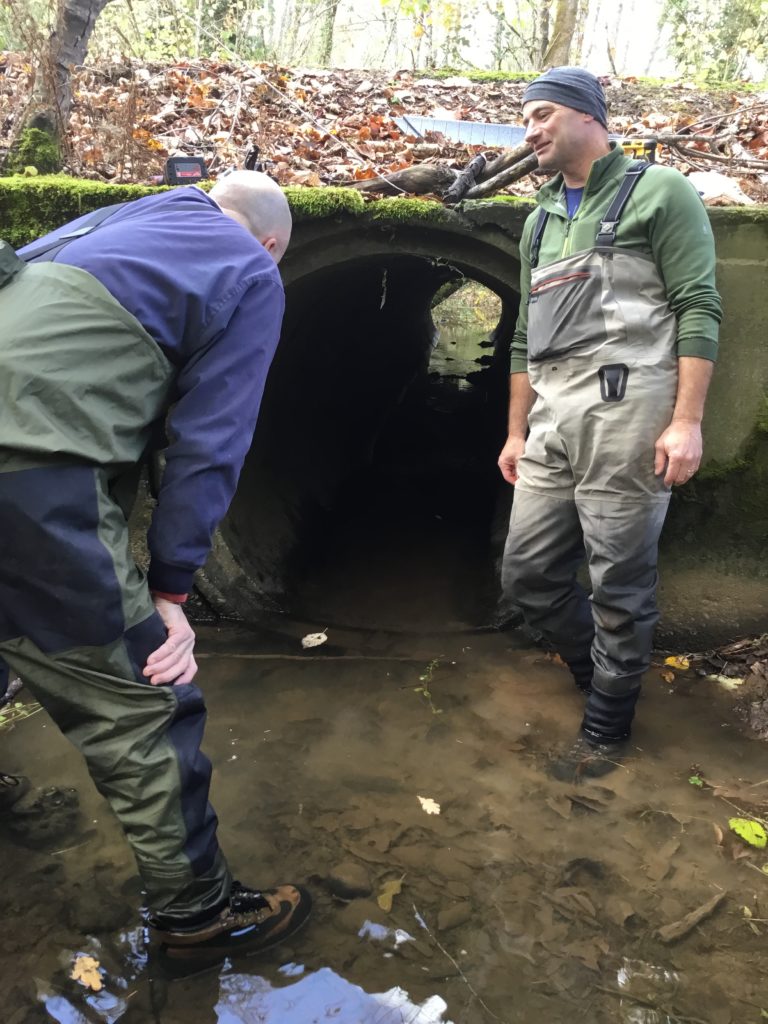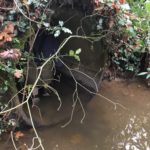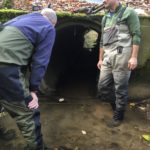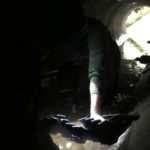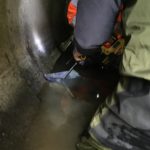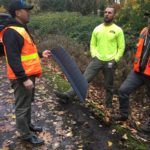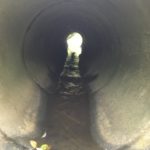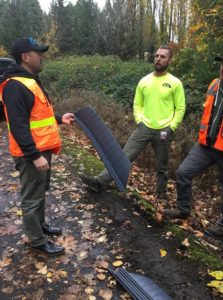
Road culverts are usually smooth and often steep. This make the stream flowing through them fast, and often shallow in the summer. This in turn makes it difficult for fish to swim upstream. The ideal restoration solution is to replace the existing culvert with a bottomless arch culvert or another solution that presents river rock at ground level instead of concrete or steel. There are times, however, when that’s too expensive for
the time being. In those cases, baffles can be used as a short-term (5-10 year) solution.
Baffles are small structures placed perpendicular to the direction of the culvert and streamflow to slow down the high flow and create pools in the backwater they create. This goes a long way toward addressing the fish passage problems.
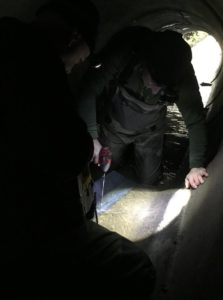
Johnson Creek Watershed Council is a partner in a multi-year project on North Fork Johnson Creek to address seven culverts that are partial or complete barriers. The first of these was the culvert under the Springwater Trail. We replaced this culvert in 2017. Last month we installed baffles on the next of the seven culverts, under SE 262nd St.
What’s exciting about this project is that we used a new technology known as New Zealand baffles. JCWC’s project is the first installation of this type of baffle in the western United States. This technology has been pioneered in—you guessed it—New Zealand.
Theses baffles are made of rubber and are installed inexpensively with a cordless drill, which attaches the baffle with bolts to the culvert bottom. In this case, the culvert is made of concrete. During high flow, the L-shaped baffle bends over enough to slow the flow and let the sediment pass through. During low water conditions, the L-shape returns, so that water is retained behind the baffle, making a small pool that juvenile fish can use to rest on their passage through the culvert.
For more information on this technology, visit http://www.ats-environmental.com/solutions/culvert-baffles/

